Nearly half of the opioids prescribed to patients under 21 years old could be classified as high risk, based on pharmacy data from 2019. More than half of these prescriptions were written by dentists and surgeons. In our toolkit published summer 2022, we share best practices to combat the opioid epidemic including:
We convened a multidisciplinary working group at Michigan Medicine with representatives from Surgery, Anesthesiology, Nursing, Pharmacy, Child Life, and Psychology, who provide care for patients and families after surgery. Together, we discussed concerns about postoperative pain and formulated a common message about how to best manage it. We encourage you to consider doing the same at your institution.
Provide a consistent message about pain management and medication use, risks, storage, and disposal. Make sure that verbal and written instructions from all providers are consistent, from preoperative evaluation to postoperative follow-up. Coordinate transitions between all clinicians to establish shared expectations for postoperative recovery and pain management needs.
As early as possible before surgery, discuss expectations regarding the experience of pain, length of recovery, and functional pain management goals with the patient and family in an age-appropriate manner. Do not routinely provide opioid prescriptions intended for postoperative use prior to surgery.
Discuss with the anesthesia team how to best manage the patient’s pain in the operating room so postoperative pain is minimized. Think about using a nerve block, local anesthetic catheter, or epidural when appropriate. Administer intravenous non-opioid medications (e.g., ketorolac, acetaminophen) for management of pain before arrival in the postanesthetic care unit unless contraindicated.
In the recovery area, use nonpharmacologic techniques such as distraction, Child Life services, and parental presence to address pain and anxiety as soon as it is safe to do so. When appropriate, give enteral non-opioid medications if not already administered pre- or intraoperatively. If opioids are used in the recovery area, oral administration is preferred over IV administration. Consider obtaining a consult from the Pain Service if the patient’s pain is poorly relieved despite standard therapy or from the Pediatric Psychiatry Service if a new history of substance use disorder is identified in a patient.
Use non-opioid therapies as a primary method for pain management and include dosing of over-the-counter (OTC) medications and instructions for their use. Discuss and encourage non-pharmacologic therapies, including distraction, heat or ice, and physical therapy.
Since acetaminophen and ibuprofen are available over the counter and don’t require a prescription for patients to use, patients and caregivers often do not receive instructions on how to use them after surgery. The packaging instructions for acetaminophen and ibuprofen provide dosing for an age and weight range and recommend as-needed use. If families follow these instructions, they may be under-dosing their children and inadequately addressing their pain. And if they were prescribed an opioid, they may think this is the first medication they should use for their child’s pain, not understanding that acetaminophen and ibuprofen often provide adequate pain relief when dosed and administered correctly and that an opioid may not be needed.
At Michigan Medicine, acetaminophen and ibuprofen are sent electronically as prescriptions to a patient’s pharmacy. When acetaminophen and ibuprofen are written as prescriptions and instructions on how to use them are provided, families then have clear information regarding dosing and understand these are the first-line medications for pain management. Some insurance companies may cover the cost of these medications when they are written as a prescription.

Many families are familiar with using acetaminophen and ibuprofen on an alternating basis as-needed for fever and assume they should use them for pain control in the same way. However, from a pain management standpoint, the half-life of both of these medications is long enough that they can be given together.
Giving these two different medications at the same time has benefits:
Simultaneous administration may also allow for longer-lasting pain management. For this reason, we strongly recommend administering acetaminophen and ibuprofen together for pain management. Provide caregivers with information about how to administer these two medications together for pain relief after surgery.
NOTE:
OPEN conducted a survey of caregivers for pediatric (under 18) postoperative patients at Michigan Medicine from 2020 through 2022. Over 1,000 surveys have been completed for pediatric patients undergoing a variety of surgical procedures through spring 2022. Procedures were selected based on the frequency with which they occurred and/or associated opioid prescriptions. Eligible patients and their caregivers were called to ask about the quantity and duration of opioid use, use of over-the-counter pain medications, pain score, and overall satisfaction with post-surgical pain management. Patient demographic information, procedure type, and opioid prescription data were gathered from electronic health records and matched with survey information to analyze prescribing patterns, compare pain management, and assess for evidence of overprescribing. Prescribing recommendations were then developed based on actual use, patient reported outcomes, and expert consensus. Many of our patient-reported outcome surveys show opioids are prescribed in greater quantities than patients take and stay in the home after surgery, remaining a persistent source for misuse and diversion.
NOTE:
At Michigan Medicine, they use the Epic electronic medical record system. When patients are discharged after surgery, providers use a discharge order set that contains instructions on postoperative care. Standard orders for acetaminophen and ibuprofen and instructions on their use have been added to the postoperative order sets. This simplifies the process of prescribing for providers and removes the barrier of additional work.
It also allows for standard weight-based dosing and instructions, and offers the opportunity for families to receive the medication at a pharmacy (where it may be covered by insurance). Providing the medications as a prescription validates these over-the-counter medications as the first-line choice for pain management and ensures patients receive the appropriate dose for their size.
This information is contained in the order set and prints as part of the patient’s After Visit Summary discharge paperwork.
If medication is needed to manage your child’s pain after surgery, the best medications to begin with are over-the-counter pain medicines. These are acetaminophen (example: Tylenol®) and ibuprofen (example: Motrin® or Advil®).
Give over-the-counter pain medications:
Tips for giving medication safely:
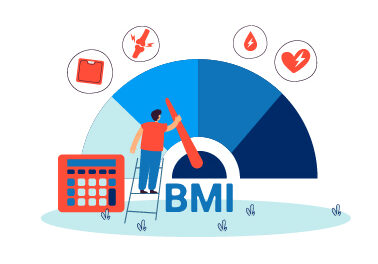
In children, opioids are prescribed based on weight (mg/kg) up to a maximum weight of 50 kg. However, most oral opioids have a small volume of distribution and are not well absorbed by fat. If obese children are dosed based on their actual weight, they are at greater risk for complications or side effects compared to children in a lower weight category. In addition, a number of overweight and obese children have comorbid sleep-disordered breathing and are already at higher risk for respiratory complications related to opioid use.
Optimally, body mass index (BMI) would be considered when dosing opioids. If BMI falls outside of the healthy weight range, providers should not follow strict weight-based dosing and instead consider using ideal body weight, lean body mass or lower dose per kg reference. A recent review performed at Michigan Medicine shows that children with BMI in the overweight and obese categories are receiving more morphine milligram equivalents compared to their peers who fall into a healthy weight category. Further research is necessary to determine how to best calculate opioid dosing in overweight and obese children.
The following best practices were adapted from the Prescription Drug and Opioid Abuse Commission (PDOAC) prescribing recommendations, which were created in partnership with OPEN and the University of Michigan Injury Prevention Center. These strategies have been implemented at Michigan Medicine since 2019.

NOTE:
Prescription drug monitoring programs (PDMPs) are state-level electronic databases that track prescriptions for controlled substances such as opioids. (Reference 14) All 50 states and the District of Columbia have implemented PDMPs in an effort to improve risky opioid prescribing practice and keep patients safe and informed. (Reference 15)
In Michigan, the PDMP is the Michigan Automated Prescription System (MAPS). Michigan law requires that a query of MAPS be performed when an opioid supply of three days or more is prescribed for a patient. It is good practice to check MAPS prior to prescribing any opioid or controlled substance, regardless of duration.
For PDMPs to be most effective, states must work together to improve accessibility, ease of use, and the transparency of PDMPs across state lines. Electronic interstate data sharing will aid in increasing PDMP data’s utility, enhancing patient care, and avoiding drug diversion and misuse. This is crucial as evidence suggests that patients cross state lines in order to seek pain management options and avoid detection by PDMPs.16 In addition, integration of EHR systems, real-time data updates, improved accessibility and ease of use, and access delegation are all critical facilitators that may help improve PDMP implementation and efficacy. (Reference 17)
Support Integration of PDMP access into the EHR
Integration may lead to greater efficiency by:
Use PDMPs before and after prescribing opioids
Once every quarter, the Michigan Department of Regulation and Licensing sends providers a report of the controlled substances they have prescribed for patients. To assess for ongoing use in patients who have received new opioid prescriptions, consider checking another MAPS report on the patients on your report.
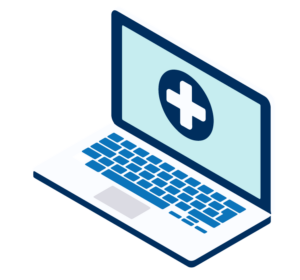
As prescribers write for fewer opioids, there may be concern about possible increase in phone calls for refills or inadequate pain management. In fact, single institution studies found that with appropriate patient education, not only did patients consume less medication, but requests for refills did not increase. (Reference 18) To ensure appropriate pain management, all patients and families should receive preoperative counseling about postoperative pain and how to manage it.

Talk about the experience of pain and usual length of recovery with the patient and family in a manner that is age appropriate.
“Some pain is normal. Your child should be able to walk and do light activity, but may be sore for a few days. This will gradually get better with time.”
“Half of all patients who have this procedure take less than five doses of an opioid medication.”
Discuss use of over-the-counter medications.
“Tylenol® and Motrin® are the first medications we use to manage your child’s pain after surgery. By themselves, they are often enough to manage your child’s pain.”
Explain when opioids should be used.
“These pills are only for management of severe pain from your child’s surgery and should not be used to manage pain from other conditions.”
Talk about the possible risks associated with opioids.
“We are careful about opioids because they have been shown to be addictive, cause harm, and even cause overdose if used incorrectly or abused.”
Let patients know that they should dispose of their medications after acute post-surgical pain has resolved, and how they should do this.
“Disposing of the opioid prevents accidental overdose or misuse. You can use a drug disposal bag, take pills to an approved collector (including police stations), or mix the medication with kitty litter in a bag and throw it in the trash.”
Check out OPEN’s safe disposal resources.
While a prescription from a surgeon may be the initial point of opioid exposure for a patient, the relationship a surgeon has with a patient is often episodic and as a result, signs of ongoing use or misuse may not be identified. A primary care provider has a longitudinal relationship with the patient and can be better equipped to identify persistent use, misuse, or onset of substance use disorder. However, primary care providers are often unaware that their patients have received an initial opioid prescription from their surgeon. Providing a primary care provider with information about their patient’s operative procedure and the plan for management of acute postoperative pain (especially if that plan includes an opioid prescription) allows for better communication, consistent messaging, and improved patient monitoring after surgery.
The goal of this communication is to let the primary care provider know that their patient had surgery, when it occurred, the plan for pain management, whether an opioid was prescribed and, if so, how much was dispensed, and the expectations in terms of pain duration and plan for refills (if any).
Ideas in terms of sharing this information include using the capability of the electronic medical record to auto-populate a letter or communication to the primary care provider containing this information. If an after-visit summary is created by your electronic medical record, you might forward a copy of this automatically to the primary care provider. Providers could also add standard language to their operative notes containing this information and forward the operating report to the primary care provider.

A document created by Michigan Medicine Child Life providing greater detail on non-medication strategies.
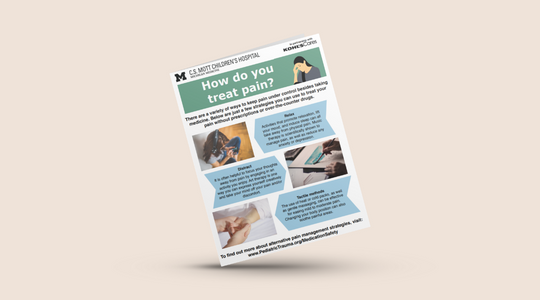
A one-page flyer created by the Pediatric Trauma Group at C.S. Mott Children’s Hospital focused on non-medication options for teens.
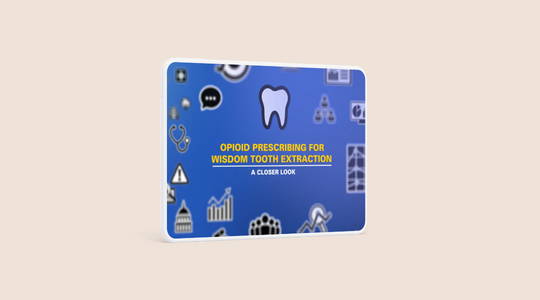
Check out this one-minute video about non-opioid pain management options for children and teens after wisdom teeth removal. Video captions are in Arabic.
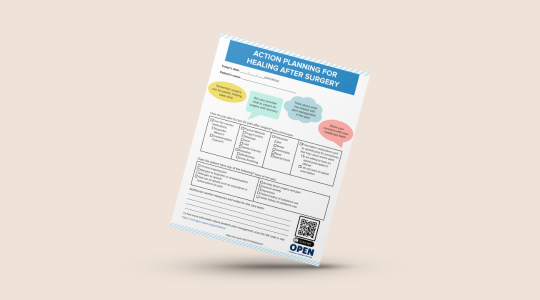
Use and share this worksheet with your child’s care team to help prepare and manage pain after your child’s surgery.